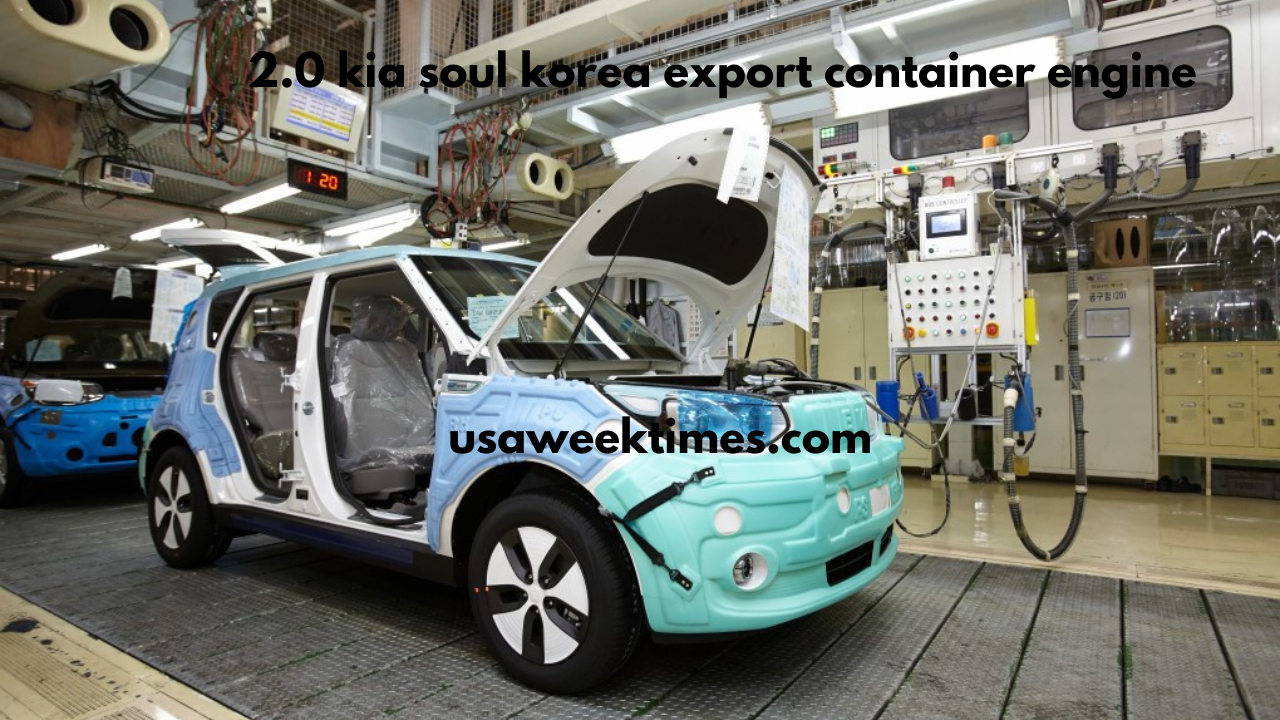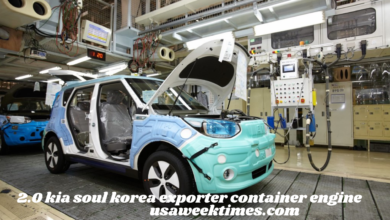Understanding the 2.0 Kia Soul Korea Export Container Engine: Key Features, Performance, and Innovation
The Kia Soul has long been recognized for its unique design and practicality. In its 2.0 variant, the Kia Soul offers a dynamic driving experience, sophisticated technology, and advanced engineering. The 2.0 Kia Soul Korea export container engine plays a significant role in these characteristics, especially when exported from South Korea to global markets. In this article, we’ll explore the various facets of the 2.0 Kia Soul, focusing on the Korea export container engine, its performance, and why it remains a crucial aspect of the vehicle’s appeal.
1. The Evolution of the Kia Soul: An Overview
Kia Soul has transformed from a quirky compact car to a refined urban crossover. First introduced in 2008, the Kia Soul garnered attention due to its boxy design, spacious interior, and relatively affordable price point. Over the years, Kia has continually enhanced the vehicle, incorporating updated features, modern technology, and improved engine options.
The 2.0 engine variant of the Kia Soul represents one of the more powerful options, delivering an enhanced driving experience compared to earlier versions. It’s particularly favored in markets that demand greater performance, like the U.S. and European countries, where the 2.0 engine is exported from South Korea in large numbers.
2. What Makes the 2.0 Kia Soul Korea Export Container Engine Special?
The 2.0 Kia Soul Korea export container engine is a key element in the vehicle’s overall performance and appeal. Kia’s 2.0-liter engine is a four-cylinder unit, known for its impressive balance between power and fuel efficiency. Whether you’re navigating city streets or cruising on highways, this engine provides enough power to offer a satisfying driving experience.
This engine has been carefully designed to meet international standards, including emissions regulations in countries like the U.S. and Europe. Additionally, the export container engine undergoes rigorous testing to ensure it can withstand long-distance shipments and still perform optimally once it reaches its destination. The careful packaging and handling during export play a crucial role in preserving the engine’s performance after transport.
3. Key Features of the 2.0 Kia Soul Export Engine
a. Engine Performance and Output
The 2.0 Kia Soul engine is built to offer a strong performance output. It typically produces around 147 horsepower, with a torque output of approximately 132 lb-ft. This power is sufficient for most drivers who are looking for a compact vehicle that can easily navigate both urban and suburban environments. With this engine, the Soul offers an agile and responsive ride, with enough acceleration to handle highway driving.
b. Fuel Efficiency and Environmental Considerations
Fuel economy is one of the standout features of the 2.0 engine. The engine is designed to provide an impressive miles per gallon (MPG) rating, making the Kia Soul 2.0 not only a fun car to drive but also a practical one. With its relatively low fuel consumption, it meets the demands of drivers who prioritize sustainability and cost-effectiveness.
The Korea export container engine is also built with attention to environmental impact. In countries like South Korea, Kia has made strides to reduce carbon emissions and increase fuel efficiency, which has helped the company meet global environmental standards.
c. Advanced Technology Integration
Kia’s commitment to innovation is evident in the 2.0 engine’s technological integration. The engine features modern fuel injection systems, variable valve timing, and advanced engine management to optimize performance and efficiency. These features work together to ensure that the vehicle operates efficiently while providing the necessary power for a smooth and enjoyable driving experience.
4. The Export Process of the 2.0 Kia Soul Korea Export Container Engine
a. The Shipping and Export Process
The export process for the 2.0 Kia Soul Korea export container engine involves a detailed and careful procedure. From the moment the vehicle is assembled at the Kia factory in South Korea, it undergoes a series of checks and preparations before being packed into a shipping container. Kia ensures that all components, including the engine, are securely packaged to prevent any damage during the journey.
The containerized transport method used for exporting the Kia Soul ensures that the vehicle remains protected from external elements, like weather conditions and handling damage, throughout the shipping process. The cars are then transported to international markets by sea, typically arriving at major ports in the U.S., Europe, and other regions.
b. Handling During Transportation
To ensure that the 2.0 Kia Soul and its engine remain in top condition during transit, Kia employs specialized handling methods. For example, the vehicles are carefully loaded and unloaded from shipping containers, and their engines undergo pre-export testing to ensure that they are fully functional. These measures are crucial to ensuring that the vehicles are delivered without defects.
Once the vehicles arrive at their destination ports, they are distributed to authorized Kia dealerships where they undergo post-arrival inspections before being made available for purchase by customers. This process ensures that the cars are in optimal condition when they hit the road.
5. Why the 2.0 Kia Soul Korea Export Container Engine Is Ideal for Global Markets
The 2.0 engine in the Kia Soul is particularly well-suited to global markets for several reasons. First, its combination of power and fuel efficiency makes it a highly appealing option for drivers worldwide. Second, the engine’s ability to meet stringent environmental and emissions regulations makes it a perfect fit for markets like the U.S. and Europe, where such standards are mandatory.
The compact size of the Kia Soul, combined with the responsive 2.0 engine, also makes it an attractive option for customers in urban areas, where space and maneuverability are critical factors. Additionally, the practicality of the engine makes the Soul ideal for both first-time buyers and experienced car owners looking for an affordable, reliable option.
6. The Future of the Kia Soul’s 2.0 Engine and Export Potential
As the automotive industry continues to evolve, Kia remains committed to improving its vehicles. The future of the 2.0 Kia Soul Korea export container engine may include additional improvements in fuel efficiency, engine technology, and environmental sustainability.
One of the trends in the global automotive market is the increasing shift toward electric vehicles (EVs) and hybrid models. However, the 2.0 engine in the Kia Soul may continue to be relevant as part of a broader strategy to offer a range of engine options to suit different customer needs. Kia’s ongoing investment in R&D will likely enhance the performance of the 2.0 engine, ensuring it remains competitive in a rapidly changing market.
Conclusion
The 2.0 Kia Soul Korea export container engine plays a pivotal role in making the Kia Soul one of the most popular compact crossovers in the global market. Its performance, fuel efficiency, and advanced technology make it an ideal choice for various international markets. Additionally, the careful export process ensures that the engine remains in excellent condition by the time it reaches customers.
As Kia continues to innovate and adapt to changing automotive trends, the 2.0 engine in the Kia Soul will likely remain a strong contender in the compact car segment. With its proven reliability and performance, the 2.0 Kia Soul Korea export container engine will continue to drive the success of the Kia Soul for years to come.




